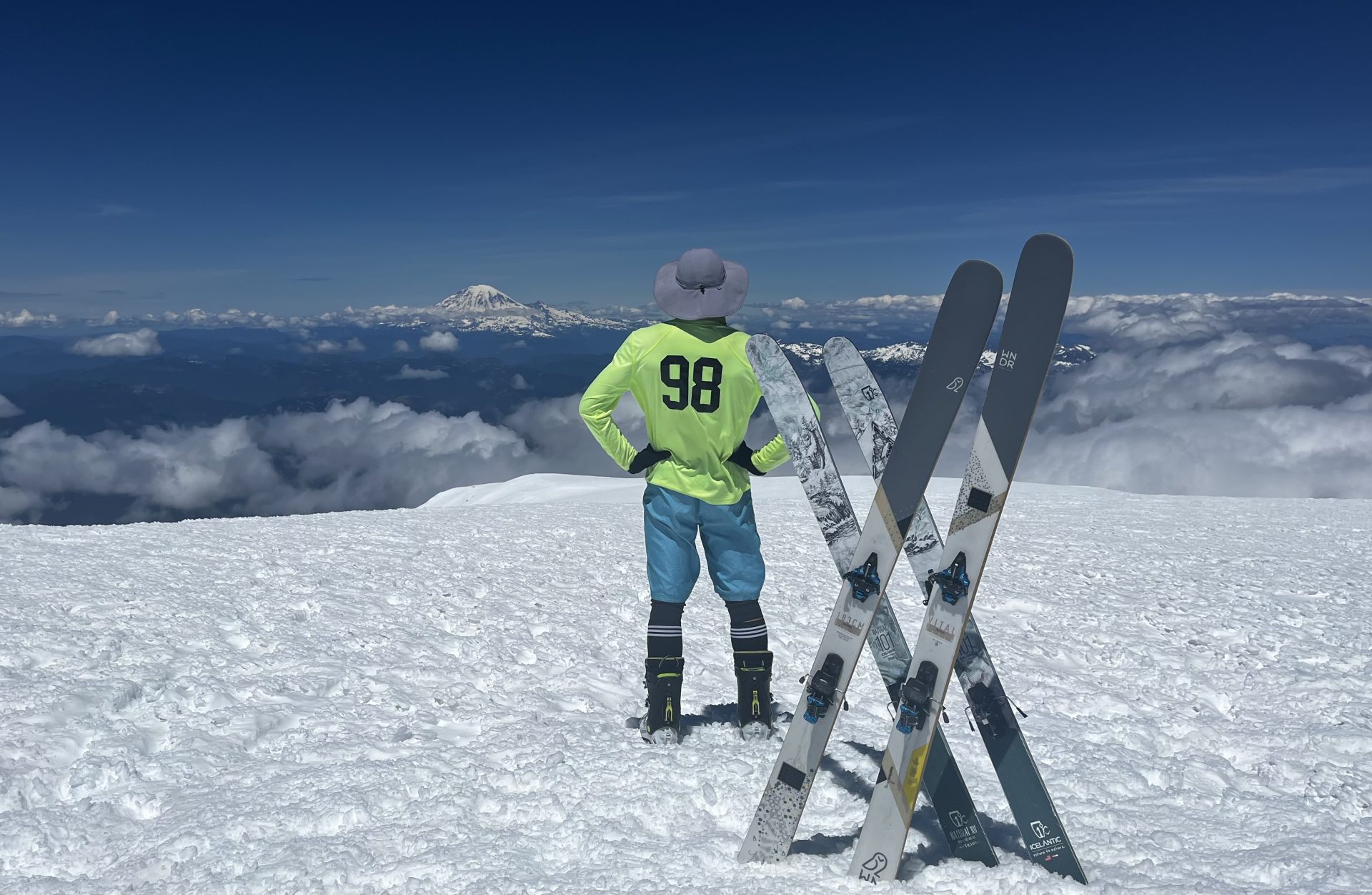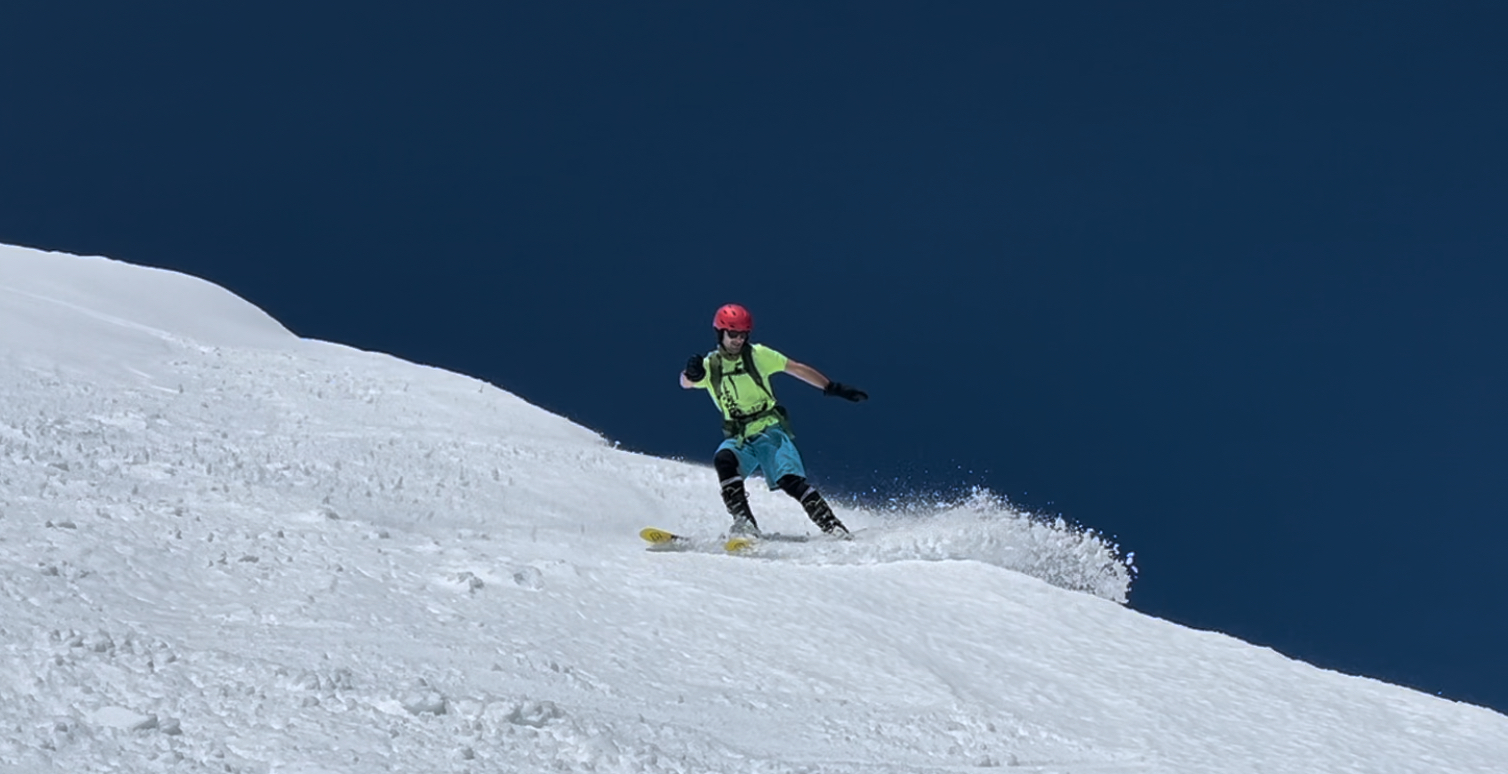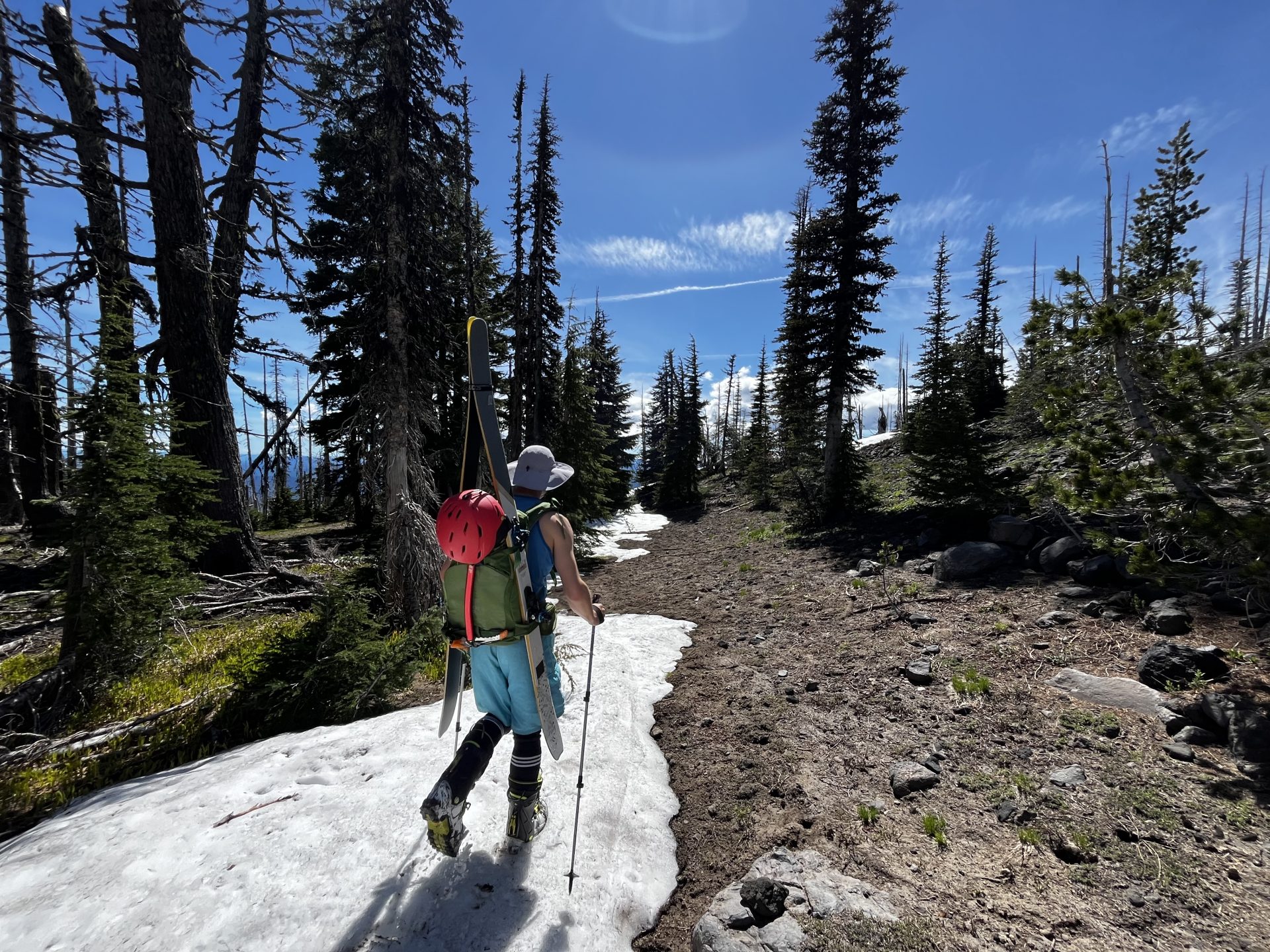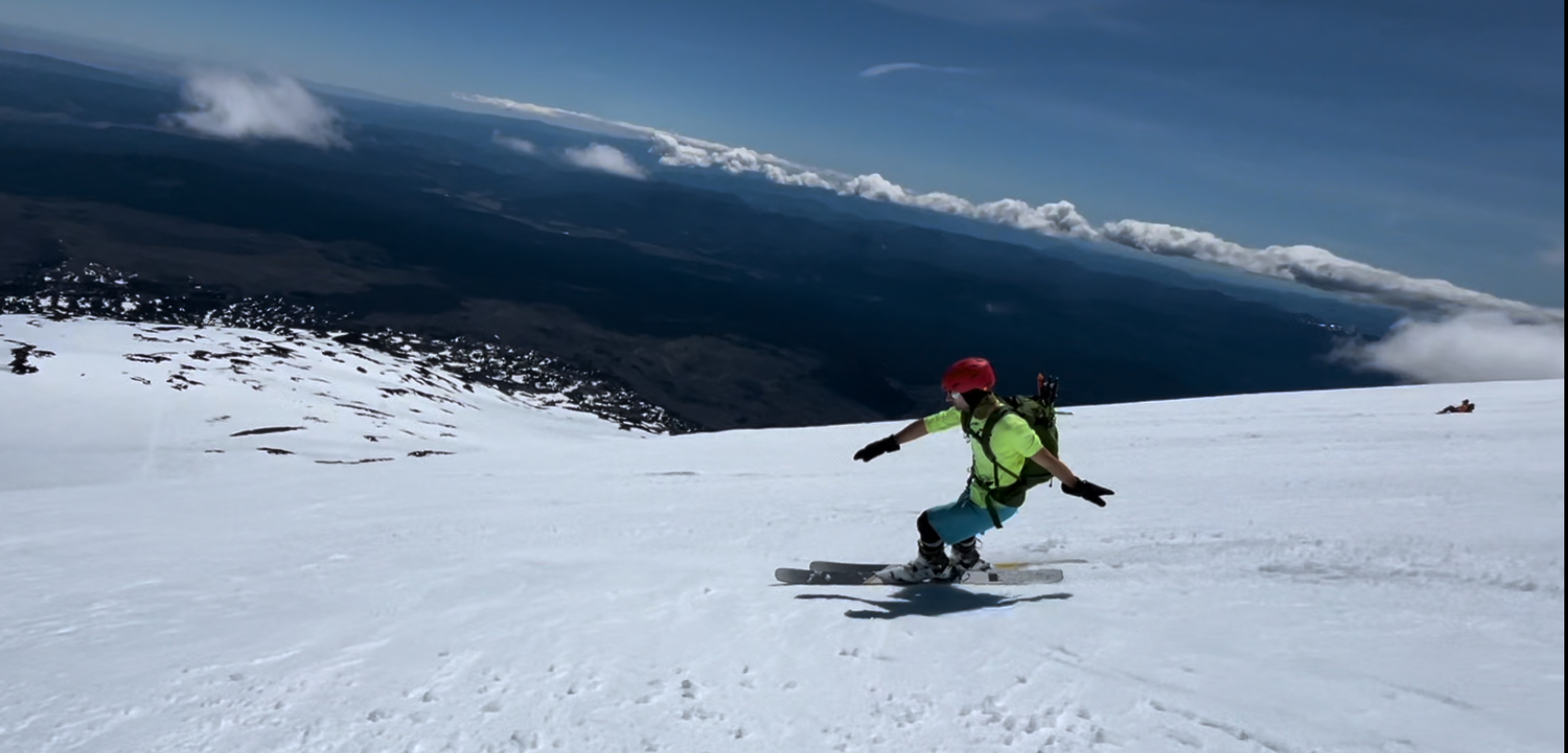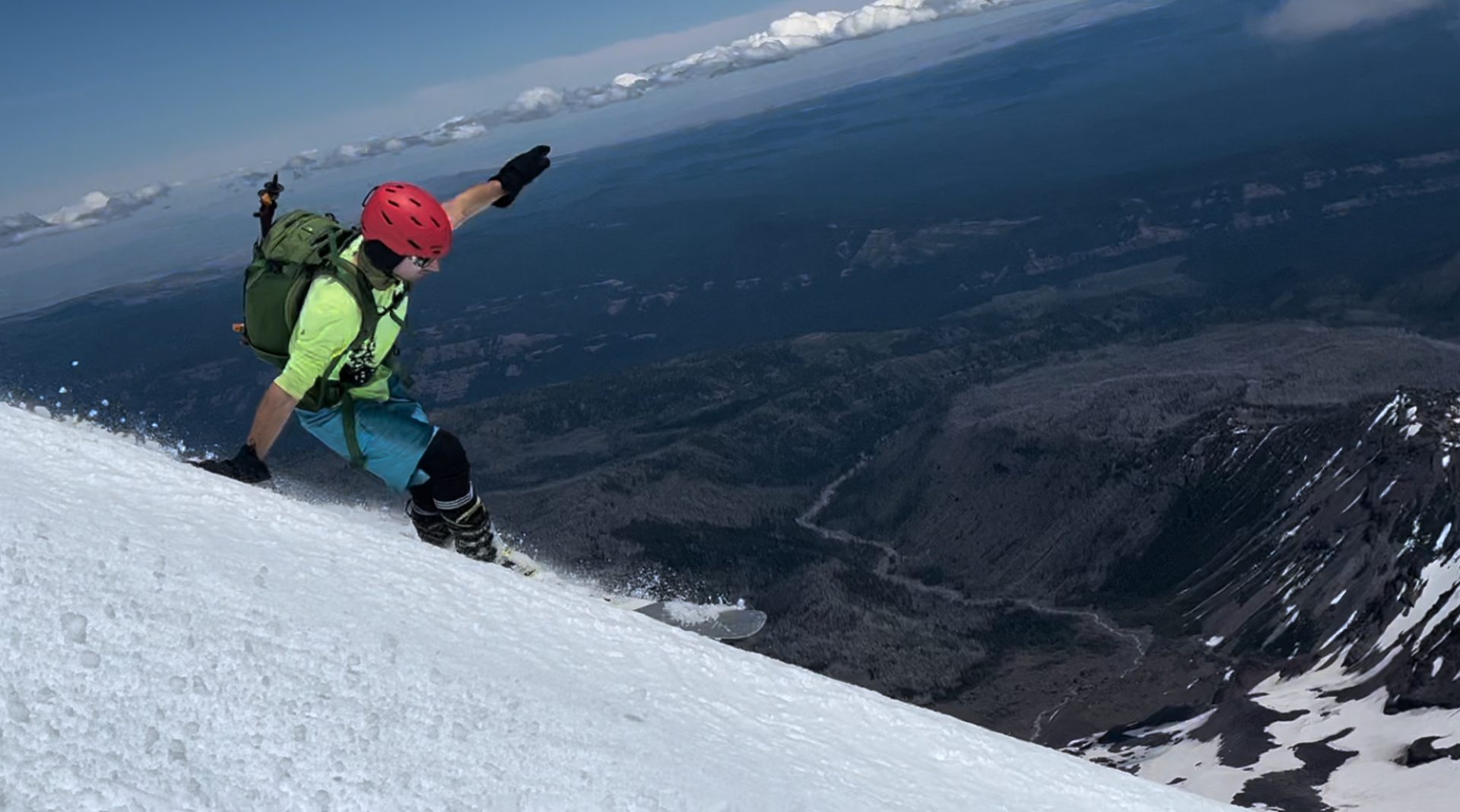
Report from June 28, 2024
Mount Adams is the second-tallest volcano in the Pacific Northwest. Sitting at 12,281 feet and with an 8,000-foot prominence, only Mount Rainier (at a mighty 14,411 feet) can make Adams feel small. After three attempts to summit in the past three years, Jardon Weems and I were stoked to drop off the top and earn our longest-ever ski descent.
We arrived at the South Climb trailhead after 6:00 p.m. on Thursday night. The parking lot was nearly full when we arrived, and we were lucky to snag a tent site. On arrival, squalls were moving off the mountain, and clouds were swirling, bringing occasional light showers amidst intermittent sun. By sundown, the wind vanished, and the clouds cleared, presenting a full view of Adams. More than a dozen cars attempted to find parking at the trailhead after 10:00 p.m. Many were unable and had to head back down the road to the Morrison Creek Campground (adding a substantial distance to any summit bid).
We started our journey just before 5:00 a.m., hoping that a later start would let the snow conditions on the upper mountain soften. We booted (in ski boots) on the trail for more than a mile before feeling confident about a contiguous line of snow. Rather than following the main trail to the ridge that meets the Lunch Counter from the west, we pushed up a series of more easterly ridges that meet the Lunch Counter directly from the south. The steeps we chose required a couple of quick portages but felt much more efficient than the familiar, long-side hill on the west ridge. The coverage was shockingly solid, from about 6,500 feet.
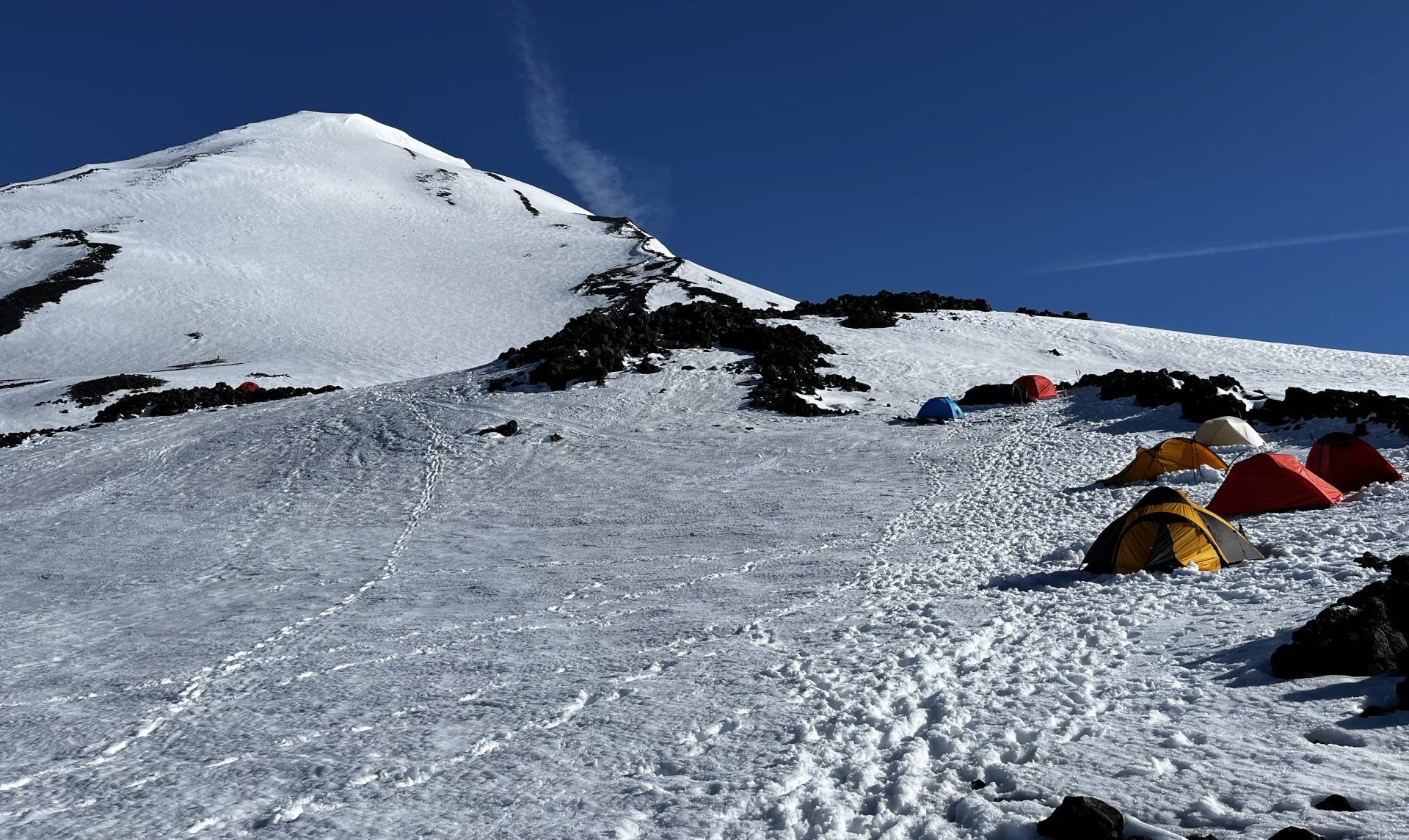
After a balmy breakfast at 9,500 feet, we started the real work of the day: Pikers Peak. Mount Adams’ false summit Pikers is a 2,000-foot pitch of 30-40 degree slopes. Ascending Pikers puts one’s lungs to the test as the altitude takes its toll. Ascending around 9:15 a.m. meant that the snow surface was still firm enough for crampons and microspikes, though it was loosening quickly. While we broke our fast, we saw two people fall a couple hundred feet down Pikers before self-arresting.
From the top of Pikers, at 11:45 a.m., we skinned across the plains leading to the summit pitch. The snowfield between Pikers and the summit made it easy to forget that we were above 11,000 feet. We charged the summit pitch on our skins—the sun had warmed the snow surface to a skinnable condition—and summited around 12:15 p.m. We enjoyed glorious views of Goat Rocks, Rainier, St. Helens, Hood, Jefferson, Broken Top, and the Three Sisters. After appropriate time reveling atop the summit of Adams, at 2:15 p.m., it was time to take our much-deserved turns.
The snow on the summit face was a bit hard, and we had to avoid getting pulled in the Southwest Chutes. Once we made it to Pikers and began our descent, the snow was creamy and delightful. To our glee, it stayed that way for several thousand vertical feet. Under 8,000 feet, my skis started to feel slightly sticky, but it was quite skiable until the end of the snow, just above 6,000 feet.
Desperate for every last snowy turn, we managed to get within .8 miles of the car before carrying our skis over dirt. Surprisingly, fewer cars were in the lot than when we arrived the day before. We returned to the car before 4:00 p.m., capping off a nearly eleven-hour effort.
Weather Forecast

Photos
